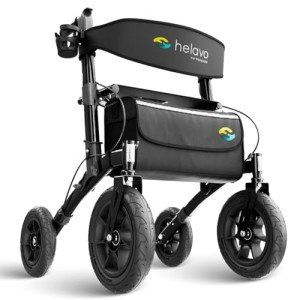Why You Should Focus On Improving Stable 4-Wheel Walker

The Stability of 4-Wheel Walkers: A Comprehensive Guide
A stable 4-wheel walker can change mobility for individuals experiencing challenges with balance and coordination. These devices, frequently called rollators, can be essential tools in regaining self-reliance for those recuperating from surgical treatment, overcoming age-related restrictions, or managing chronic conditions. This blog explores the features, benefits, and factors to consider one need to bear in mind when picking a 4-wheel walker, supplemented with useful tables and a Frequently Asked Questions (FAQ) section to enhance understanding.
Why Choose a 4-Wheel Walker?
A 4-wheel walker offers a number of benefits over conventional walking help, such as canes or walkers with only 2 wheels. Below are a few of the essential benefits:
Benefits of a 4-Wheel Walker
| Benefit | Description |
|---|---|
| Enhanced Stability | The four wheels provide a stable base, permitting simpler navigation across different surfaces. |
| Enhanced Mobility | The designs are usually lighter and easier to maneuver, enabling users to move with confidence. |
| Integrated Sit-Down Feature | Lots of 4-wheel walkers included an integrated seat, providing users the choice to rest when needed. |
| Storage Options | Many walkers include storage bags or baskets for personal products, increasing flexibility for users. |
| Adjustable Height | Many designs use height changes to accommodate numerous user heights, offering comfort throughout use. |
| Braking System | The majority of walkers come geared up with hand brakes, allowing the user to securely stop and lock the walker in location. |
Types of 4-Wheel Walkers
4-wheel walkers come in various styles and functionalities to cater to different user needs. Below is a categorized table:
| Type | Description |
|---|---|
| Requirement Rollators | Fundamental models developed for basic mobility. Frequently they said and foldable. |
| Heavy-Duty Rollators | Designs constructed to support larger weights (approximately 500 pounds or more). Ideal for heavier users. |
| Dual Brake Rollators | Offer both hand brakes and parking brakes for boosted safety, particularly advantageous for elderly users. |
| Folding Walkers | Compact designs that quickly fold for transport and storage. Perfect for those who travel or have actually restricted area. |
| Specialty Rollators | Geared up with unique features such as integrated lights, larger seats, or particular styles for particular conditions like arthritis. |
Secret Features to Consider
When selecting a stable 4-wheel walker, it is important to choose a model that fits the user's requirements. Here are some vital features to consider:
- Weight Capacity: Always inspect the optimum weight limitation.
- Height Adjustability: Ensure that it can be adapted to suit the user's height.
- Wheel Size: Larger wheels use much better ability over rough terrains, while smaller wheels are terrific for indoor usage.
- Seat Height and Comfort: If the model includes a seat, check its height and cushioning.
- Braking Mechanism: Look for reliable brakes that are easy to operate.
- Alleviate of Folding: Users must quickly fold and unfold the walker for transport.
- Storage Solutions: Evaluate storage alternatives like seat pouches and under-seat baskets.
- Product and Durability: Consider walkers made with durable products to ensure durability.
Popular Models on the Market
Here's a selection of popular designs presently offered, showcasing their distinct features and specifications:
| Model | Weight Capacity | Seat Height | Features |
|---|---|---|---|
| Drive Medical Nitro | 300 pounds | 23.5" | Lightweight, easy-to-fold design, large wheels. |
| Medline Ultralight | 300 lbs | 23" | Integrated seat, adjustable manages, storage pouch. |
| Nova Zoom 4 | 300 pounds | 22-24" | Dual brakes, padded seat, easy to fold. |
| BABY JOY 4-Wheel | 300 pounds | 20-23" | Lightweight aluminum frame, storage basket, ergonomic deals with. |
How to Use a 4-Wheel Walker
Knowing how to utilize a 4-wheel walker effectively is important for maximizing security and mobility. Here's a detailed guide:
- Position the Walker: Stand behind the walker, with the handlebars at hip height.
- Change for Comfort: Make sure the height suits your comfort for standing and walking.
- Engage Brakes: Before sitting, engage the brakes to make sure the walker does stagnate.
- Step Forward: Move the walker forward, ensuring all four wheels touch with the ground.
- Stroll Naturally: Use a natural walking rhythm, moving the walker forward and stepping the mechanism as needed.
- Rest: When fatigued, find a seat on the walker, engage the brakes, and sit easily.
FREQUENTLY ASKED QUESTION
1. What is the ideal height for a 4-wheel walker?
- The handlebars need to be at waist level when the individual is standing straight. Most walkers provide adjustable heights to accommodate this.
2. Can a 4-wheel walker be utilized outdoors?
- Yes, many designs are developed for outdoor usage, including larger wheels for much better navigation over unequal terrains.
3. How do you preserve a 4-wheel walker?
- Routinely check the wheels, brakes, and frame for wear and tear. Clean surfaces to get rid of debris, and guarantee the brakes operate correctly.
4. Exist insurance coverage benefits for acquiring a 4-wheel walker?
- Lots of insurance coverage plans cover walkers if recommended by a healthcare service provider. Always inspect your specific plan information.
5. What is the average cost of a 4-wheel walker?
- Costs might vary commonly, from around ₤ 50 for fundamental designs to over ₤ 300 for advanced styles.
A stable 4-wheel walker can substantially add to a person's mobility, confidence, and quality of life. By considering the features, types, and ideal use techniques talked about above, people can make educated decisions that best match their needs. Whether it's for recovery, aging, or managing ongoing health conditions, picking the right walker can cause a much healthier and more active lifestyle.

